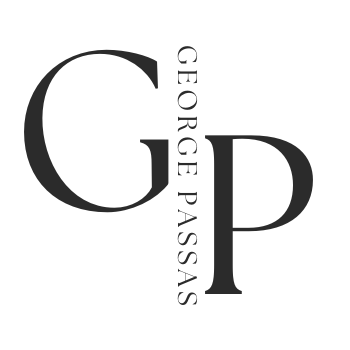Million Dollar Days
Embark on a journey of discovery with ‘Million Dollar Days,’ the ultimate podcast for mastering the art of business and life. Here, success isn’t just a destination, but a daily pursuit. We bring together thought leaders, innovators, and visionaries to share their stories and strategies. Uncover the secrets to building a thriving business, cultivating a winning mindset, and living a life of fulfillment. Tune in and transform your ordinary days into extraordinary successes!
What would a billionaire actually do if they woke up at zero, without their name, money, or network? We start there and pull the thread through pivots, ego, and the kind of decisions that either compound or cap your growth. It’s a raw, practical conversation from the trenches of construction, creative services, and scaling a business when the scoreboard isn’t moving fast enough.
We unpack the pivot-versus-persist dilemma with clear signals: are others winning in your category right now, or is the market structurally capped? Are your systems tightening, win rates rising, cycle times shrinking, and margins holding? What external shifts—tech, regulation, demand—change the math? Then we get honest about ego. From $40M jobs melting down over $20K claims to “winning” a client argument and losing the account, we show how pride becomes a hidden tax on profits. Process beats posture: set scope boundaries, price change decisions, and keep rooms calm so deals close and relationships last.
We also talk about quitting a steady salary, not with heroics but with truth. Sometimes the fire to build is bigger than the fear of missing a paycheck. Sometimes misery is the push. Either way, the play is the same: most decisions aren’t permanent, speed beats rumination, and you can reverse a call faster than you can recover from months of indecision. To make big choices, we lean on a simple framework: do/don’t and get/don’t-get. Map the consequences now and later, draw the flow, and act. If it’s wrong, you’ll know soon enough and adjust.
Finally, we tie it to daily habits that actually move the needle: early deep-work windows before the world interrupts, a midday training block to reset energy, and pre-deciding clothes and priorities to remove friction. This isn’t hustle theater. It’s an operating system that protects focus, speeds execution, and keeps you playing offense.
If this hits, tap follow, subscribe on YouTube for new drops, and share it with a friend who’s wrestling with a pivot or a high-stakes call. Your review helps more builders and operators find the show—and keeps us shipping the conversations you ask for next.


What would a billionaire actually do if they woke up at zero, without their name, money, or network? We start there and pull the thread through pivots, ego, and the kind of decisions that either compound or cap your growth. It’s a raw, practical conversation from the trenches of construction, creative services, and scaling a business when the scoreboard isn’t moving fast enough.
We unpack the pivot-versus-persist dilemma with clear signals: are others winning in your category right now, or is the market structurally capped? Are your systems tightening, win rates rising, cycle times shrinking, and margins holding? What external shifts—tech, regulation, demand—change the math? Then we get honest about ego. From $40M jobs melting down over $20K claims to “winning” a client argument and losing the account, we show how pride becomes a hidden tax on profits. Process beats posture: set scope boundaries, price change decisions, and keep rooms calm so deals close and relationships last.
We also talk about quitting a steady salary, not with heroics but with truth. Sometimes the fire to build is bigger than the fear of missing a paycheck. Sometimes misery is the push. Either way, the play is the same: most decisions aren’t permanent, speed beats rumination, and you can reverse a call faster than you can recover from months of indecision. To make big choices, we lean on a simple framework: do/don’t and get/don’t-get. Map the consequences now and later, draw the flow, and act. If it’s wrong, you’ll know soon enough and adjust.
Finally, we tie it to daily habits that actually move the needle: early deep-work windows before the world interrupts, a midday training block to reset energy, and pre-deciding clothes and priorities to remove friction. This isn’t hustle theater. It’s an operating system that protects focus, speeds execution, and keeps you playing offense.
If this hits, tap follow, subscribe on YouTube for new drops, and share it with a friend who’s wrestling with a pivot or a high-stakes call. Your review helps more builders and operators find the show—and keeps us shipping the conversations you ask for next.

Ten years can change everything if you choose what to measure and keep showing up. We took a page from MrBeast’s 10-year time-capsule lesson and set a public target: grow our YouTube channel from 452 to 1,000 subscribers before Christmas. That single, visible metric forces clarity—on what to make, how to package it, where to distribute it, and which activities actually move the needle.
We break down the plan with zero fluff. First, guests as reach multipliers: not for vanity, but for distribution and fresh storylines that create shareable assets. Then we talk content packaging—the hook, thumbnail, first ten seconds, and copy—because attention is earned before value is delivered. We expand the platform map to include LinkedIn for business-first discovery, and we pressure test a higher-volume cadence with shorter, focused episodes to increase surface area for serendipity.
From there, we get tactical on paid reach and sponsorships—turning a cost center into a growth loop by underwriting targeted promotion of proven clips. We add light structure so the show stays lively but intentional: planned CTAs, clear segments, and prepped research that makes conversations sharper. Finally, we commit to a weekly audit of what topics and formats convert views into subscribers, and we bias future episodes toward those patterns.
If you’re pushing toward a year-end goal—revenue, profit, health, time with family—this framework applies. Pick one number. Design the smallest daily activities that move only that number. Track, test, iterate, and keep going when it’s boring. And if you’ve ever learned something here, help us close the gap: hit subscribe on YouTube today and share the channel with one friend who’ll enjoy it. Your click accelerates the mission. Subscribe, leave a review, and tell us the one metric you’ll crush by year-end—we’ll cheer you on next week.
Ready to level up your business and entrepreneur life? Check out our CMO Playbook Group at cmoplaybook.ai and join us for FREE at the Builders Summit here https://builderelite.oneclickdigital.net.au/builders-summit

A model super yacht on the desk became the perfect antagonist: a daily reminder that potential without momentum is just décor. We unpack the sting of that feeling and turn it into a plan, starting with the reality that Q4 isn’t a full quarter—December shrinks, January drifts—and you’ve really got about sixty days to make moves that still matter next year. We go straight at the hard questions: is it timing or skill, grind or leverage, patience or pressure?
We revisit Bezos-era benchmarks not to worship history but to challenge our ceilings. If the market is different now, then where does leverage live today? We talk AI as a real bet, not a story you tell yourself to avoid discomfort. We redraw the scoreboard for builders and operators: absolute dollars over vanity margins, risk balanced by better systems, and a pipeline strategy that seeds next year now. One host confronts his own leadership drift—playing on the field instead of coaching—and shows how quarterly reviews, “above the line” training, and promotions for pressure performers turn teams into multipliers.
Momentum loves systems. We share how iterating everything—event names, content, sales flows, confirmation processes—reduced luck and raised signal. Content volume across platforms gets a nod too: underwhelming engagement isn’t a verdict, it’s a phase. Routines matter because they build hours you can invest in assets: early deep work, Slack walls, gym resets, ice baths. Still, we won’t pretend habits alone buy yachts. The compounding effect comes from a stack: clearer offers, faster tests, stronger people, bigger bets.
We end with urgency that actually sticks: count your finite weeks, pick one 30–60 day push that changes your trajectory, and commit. Hire the person, fire the drag, sign the project, ship the offer, book the trip. If you’re in construction, join us at the Builder Summit in Melbourne and Perth for brand, marketing, and scale systems that cut noise and build profit. And if you’re here for straight talk that refuses to coddle, hit subscribe, share the episode with a friend who needs a nudge, and leave a review to tell us the bold move you’ll make before the holidays.

